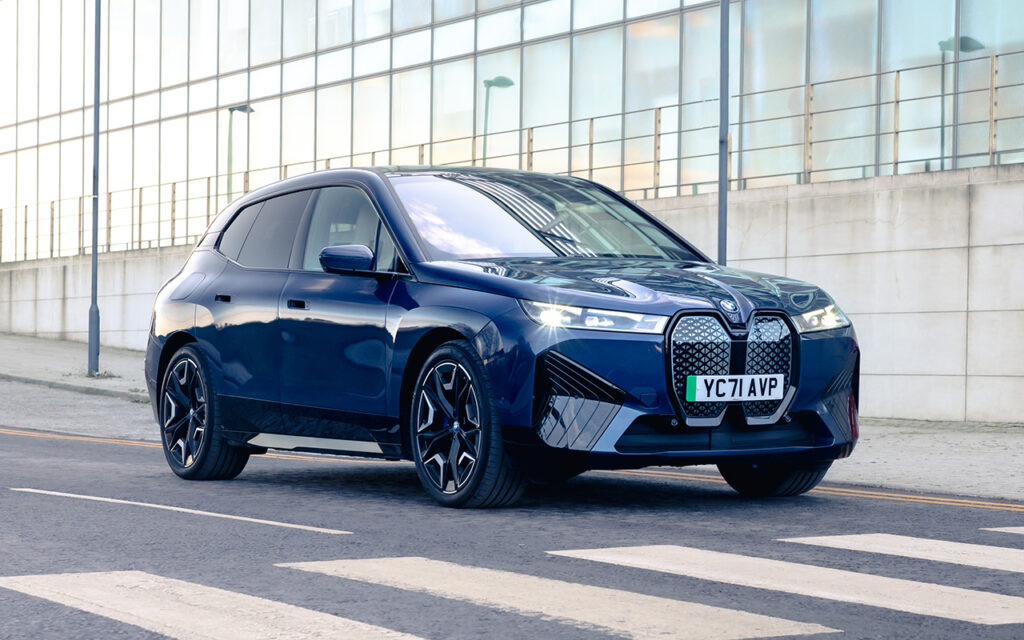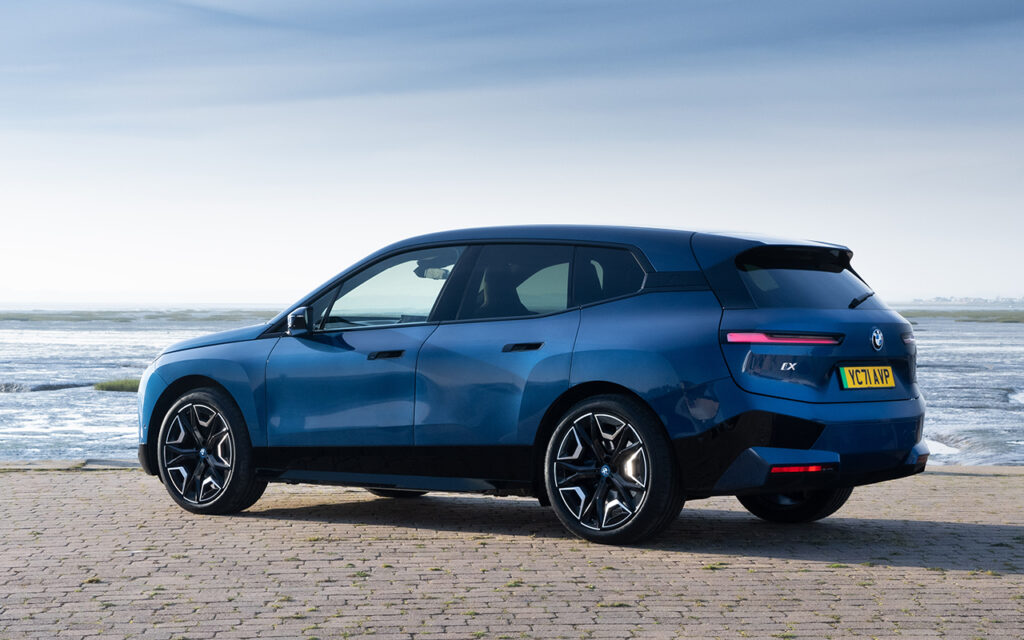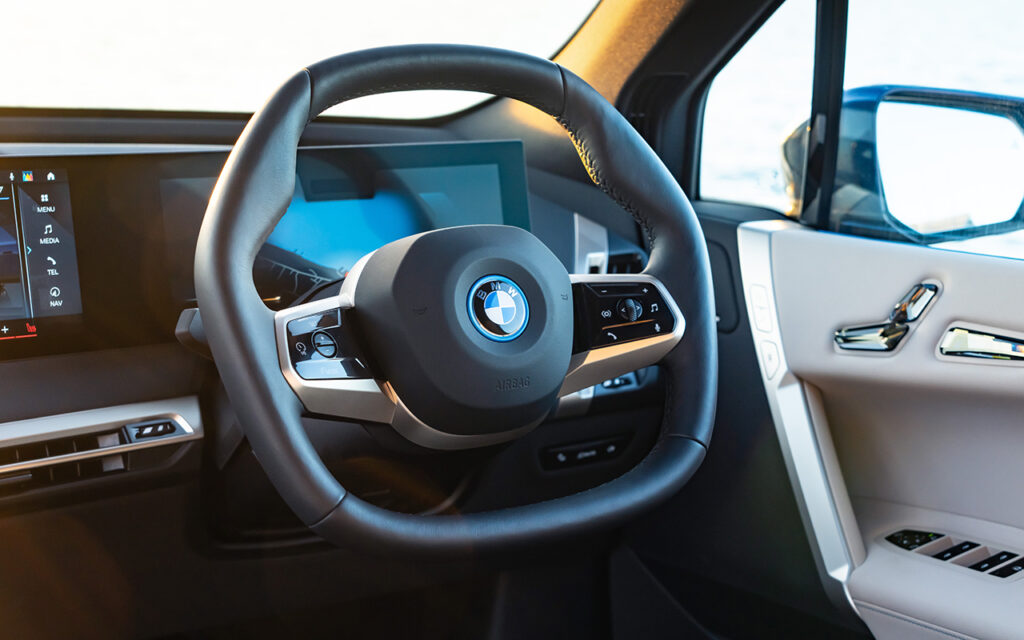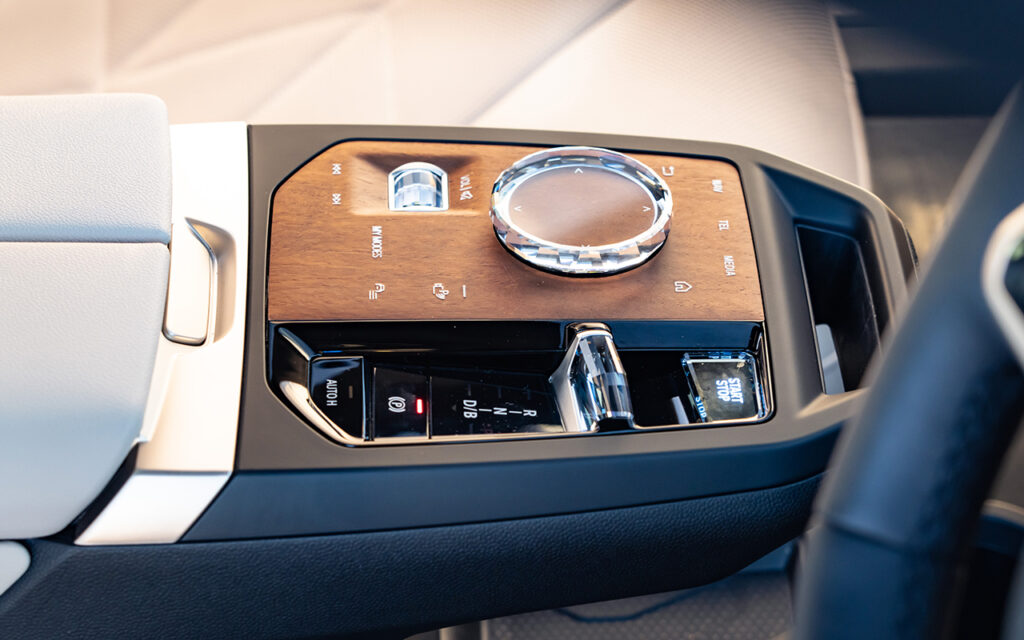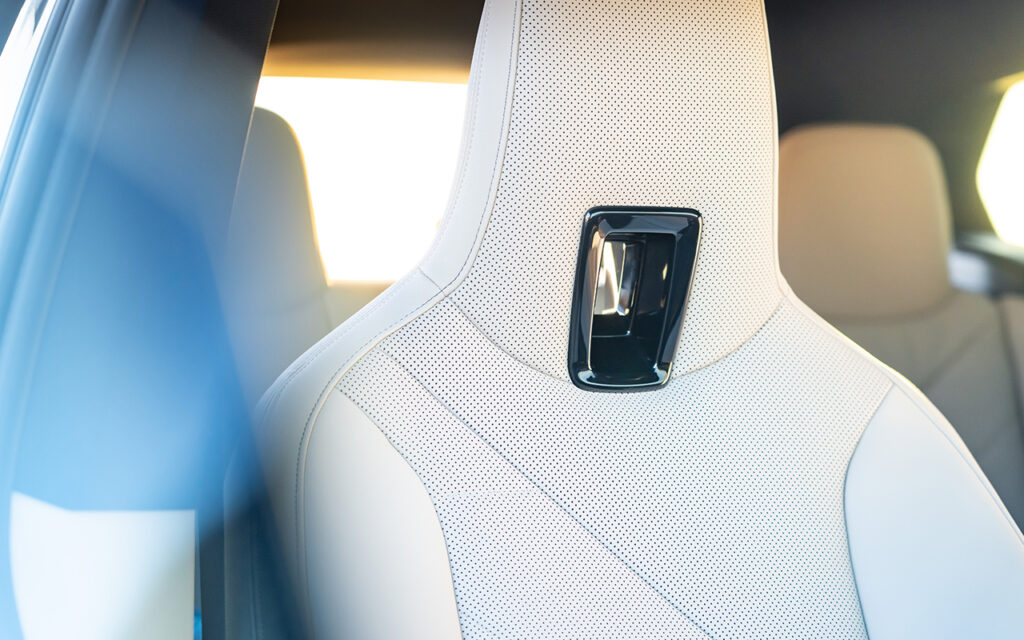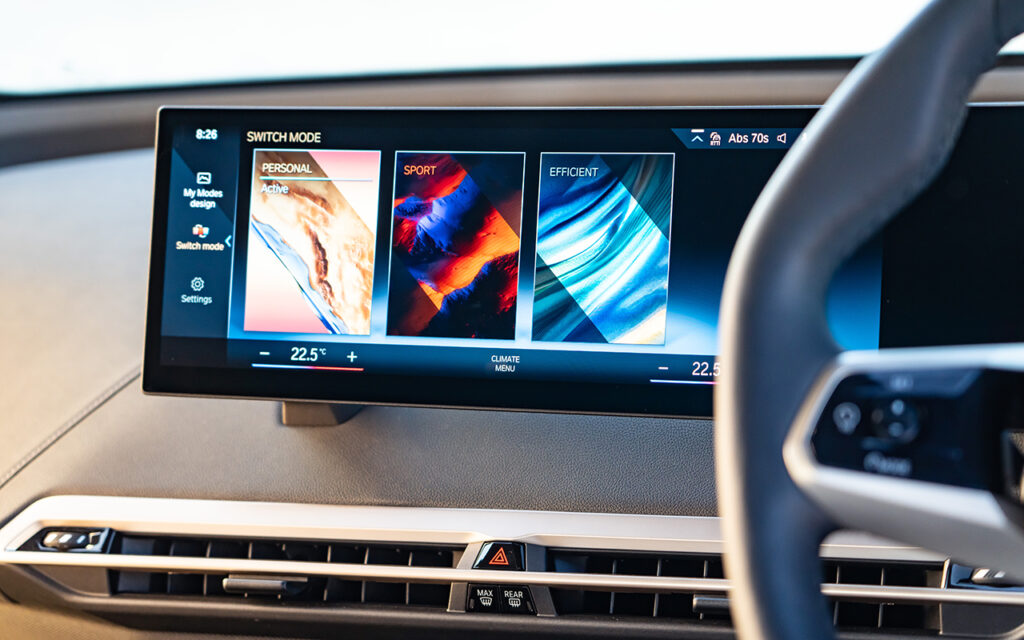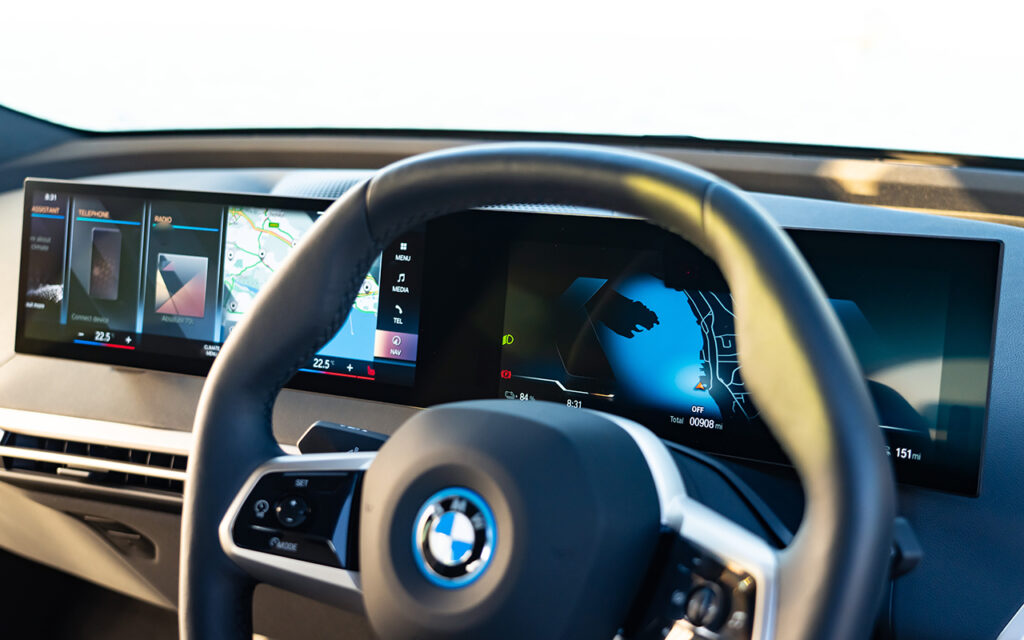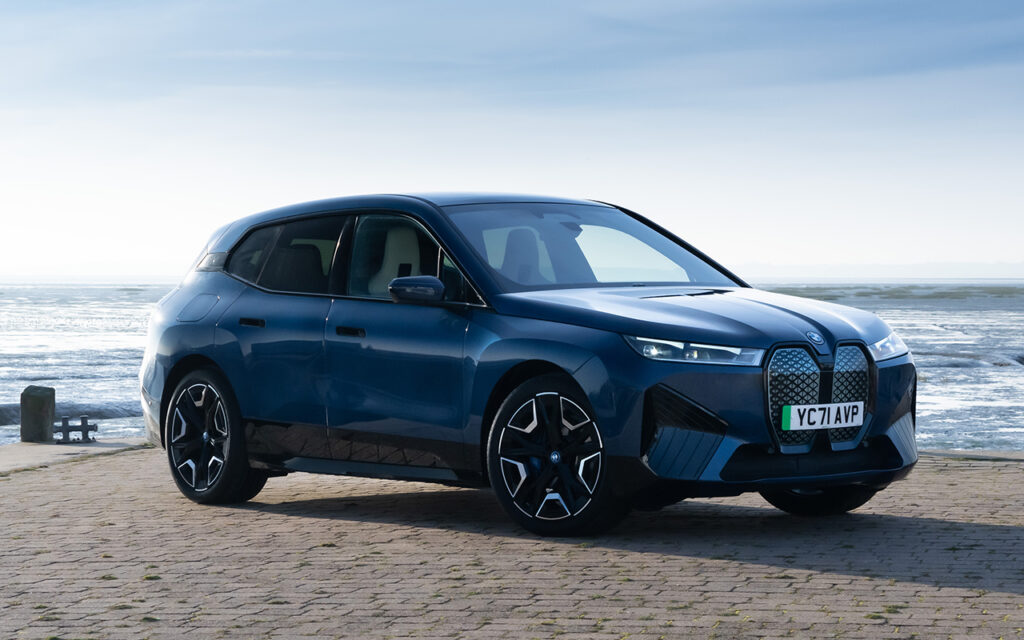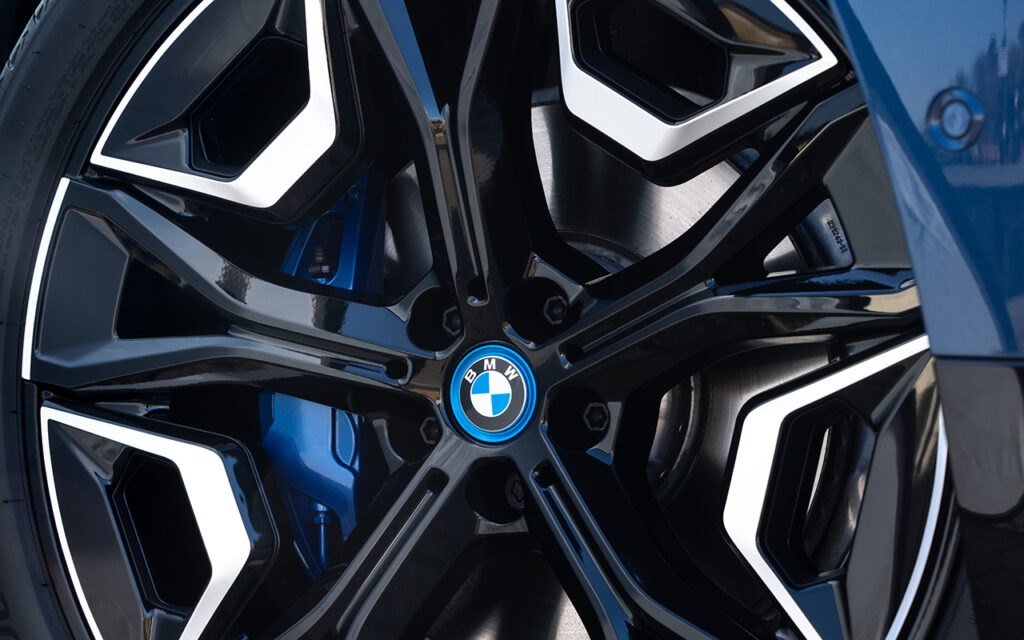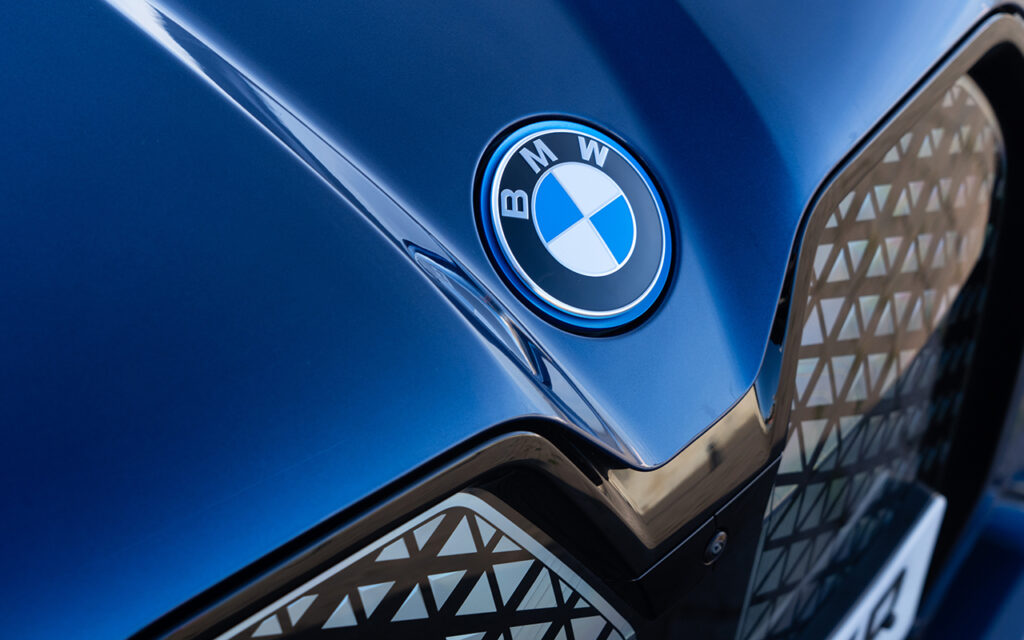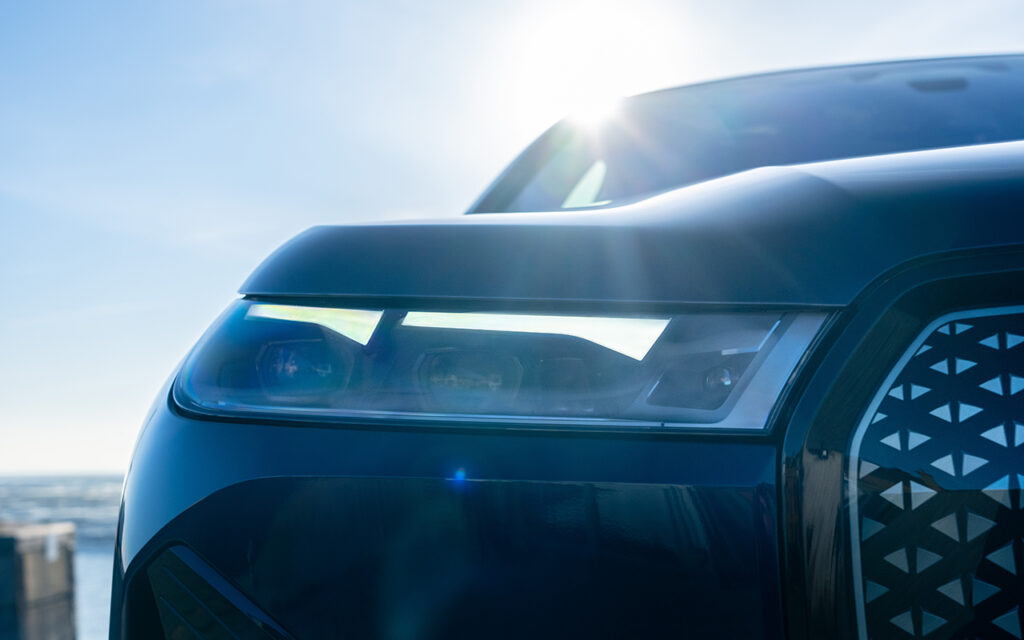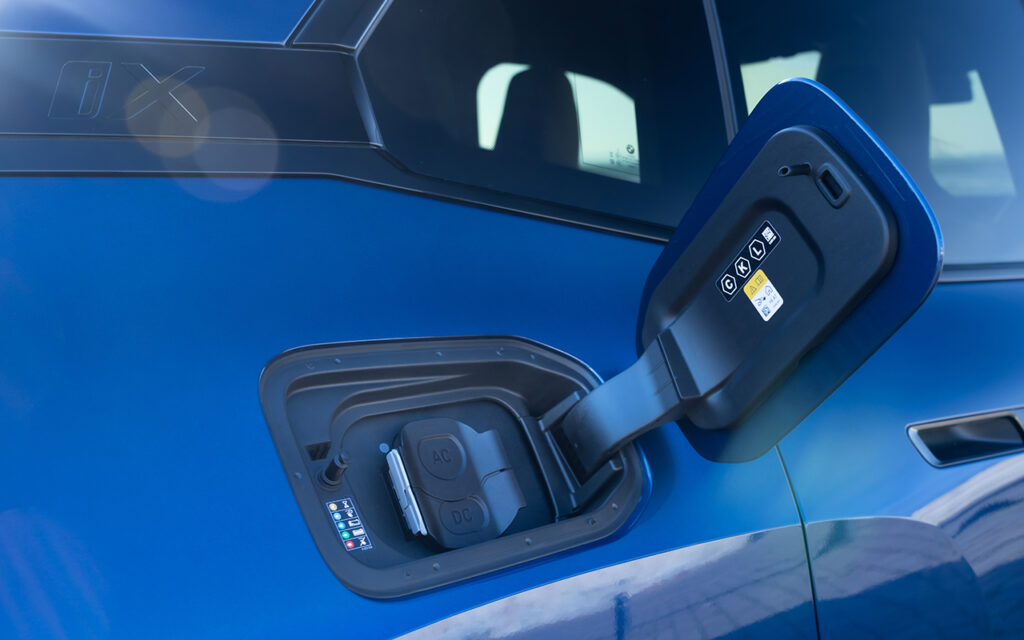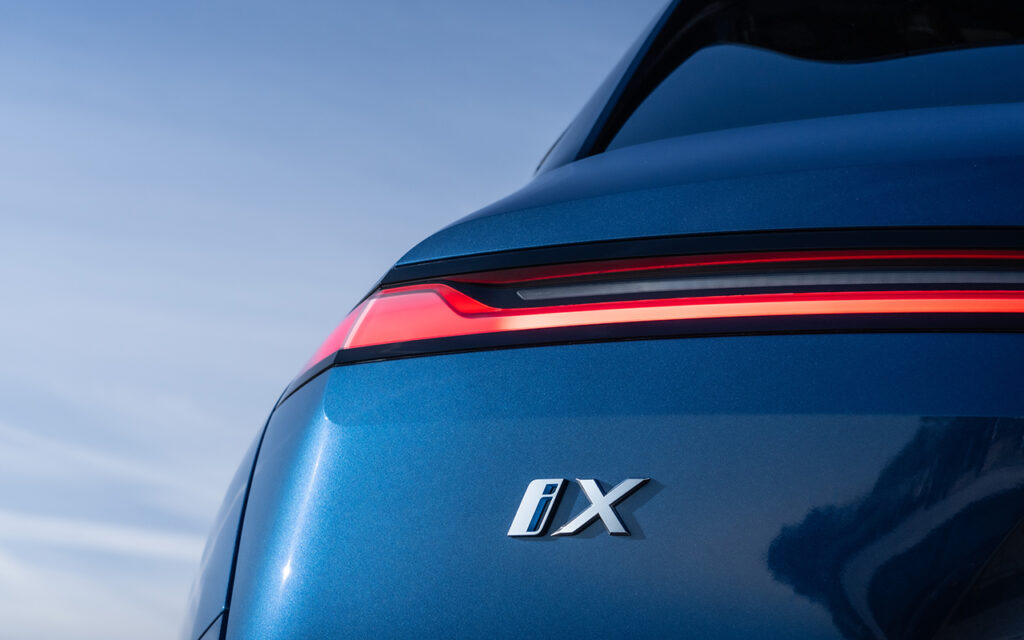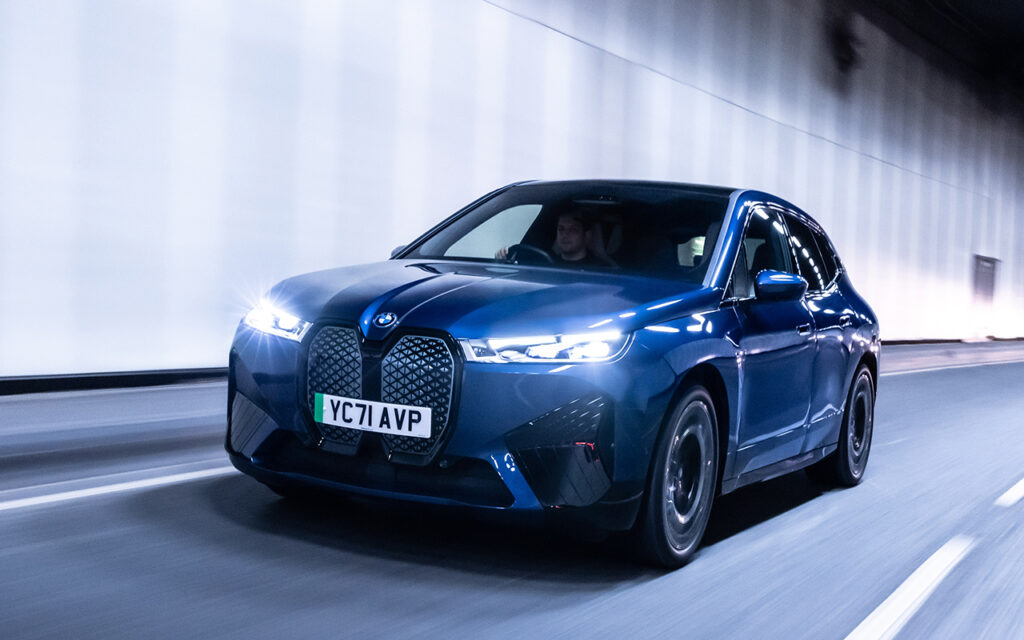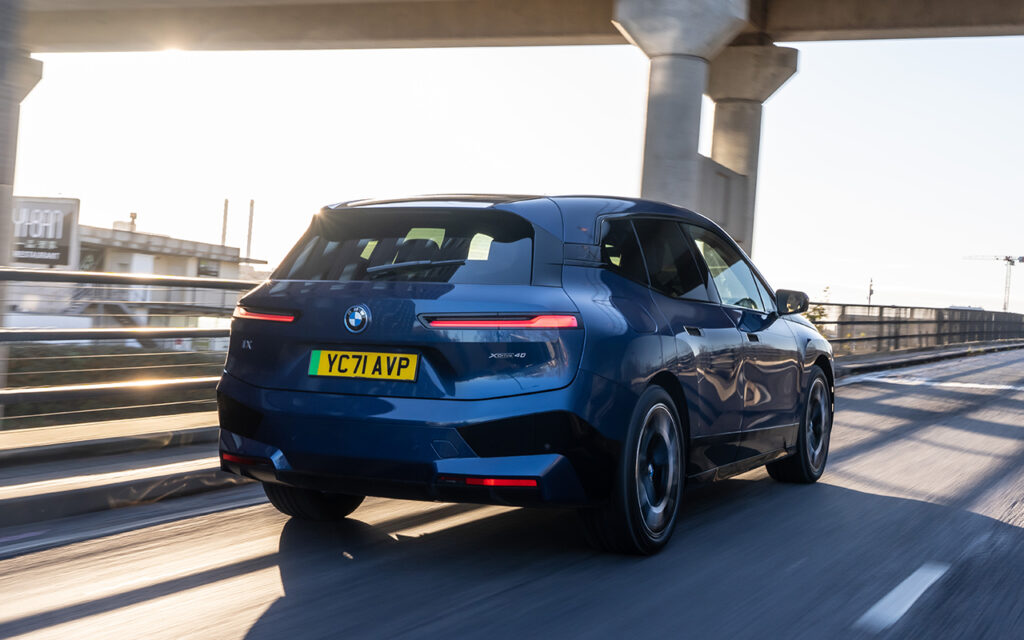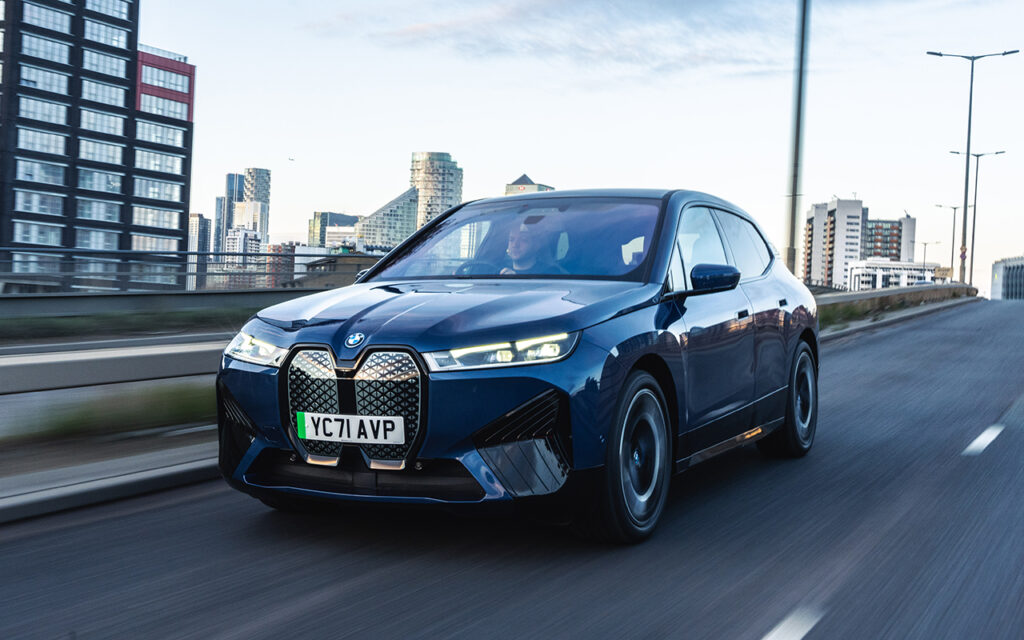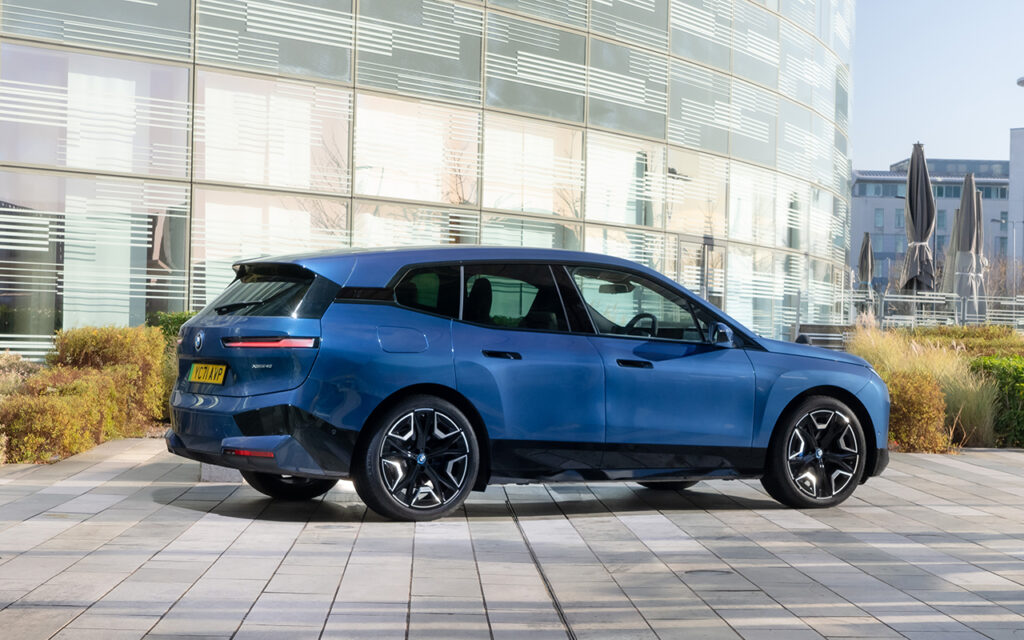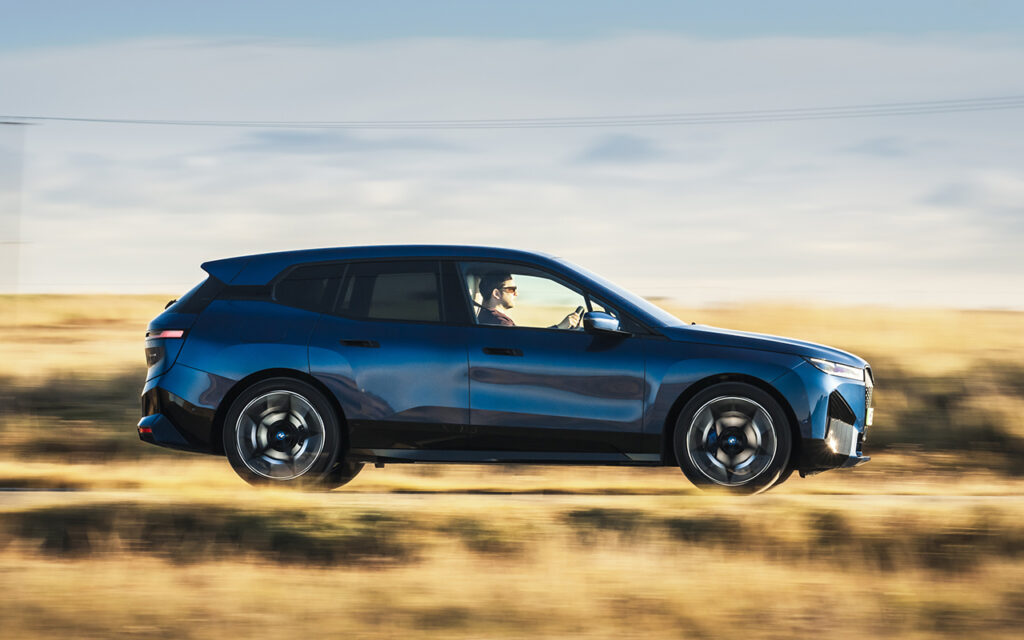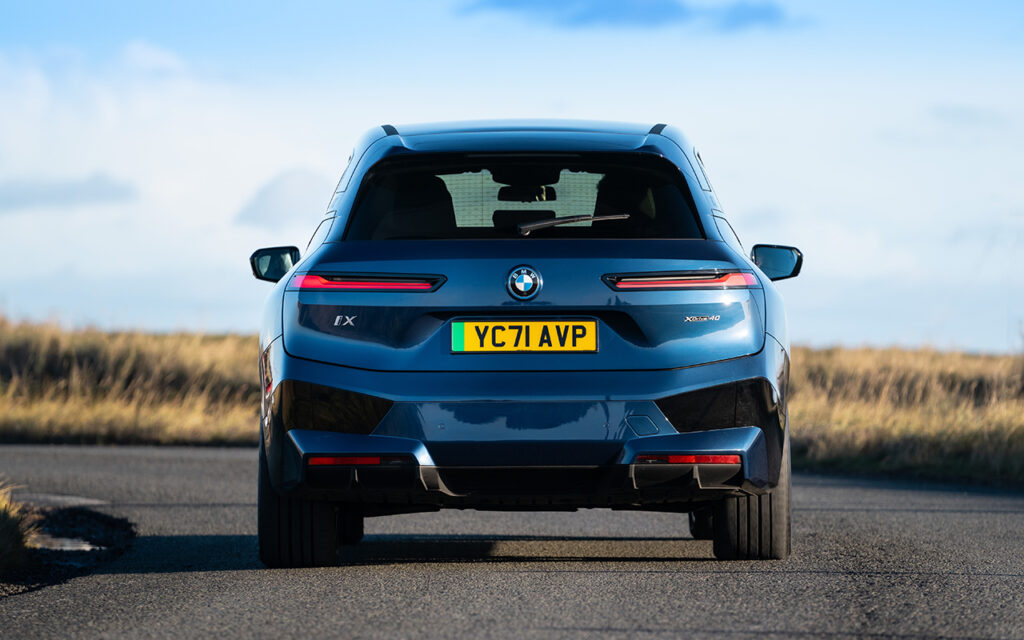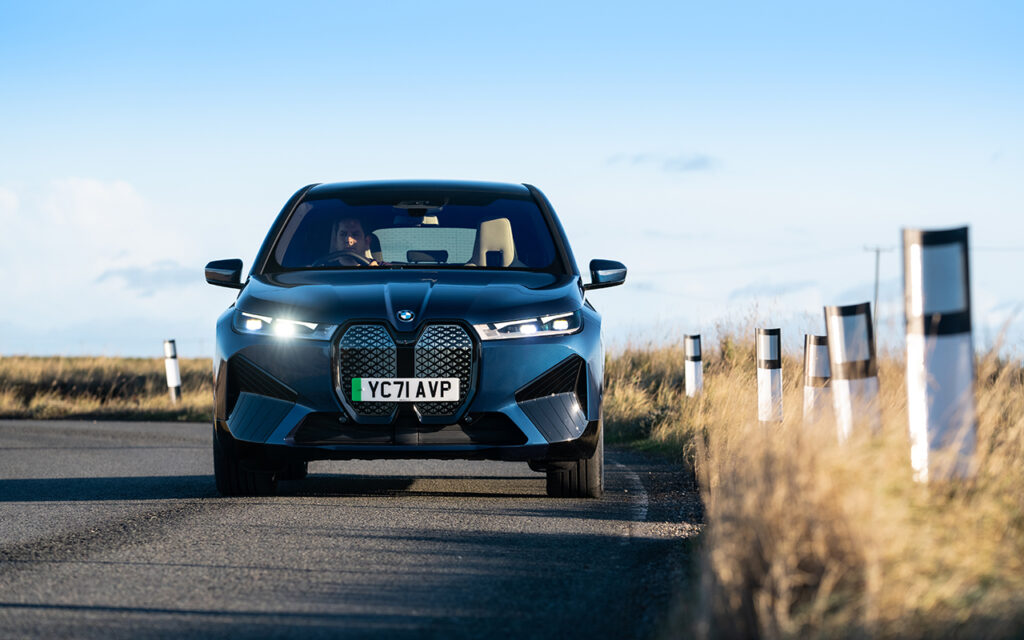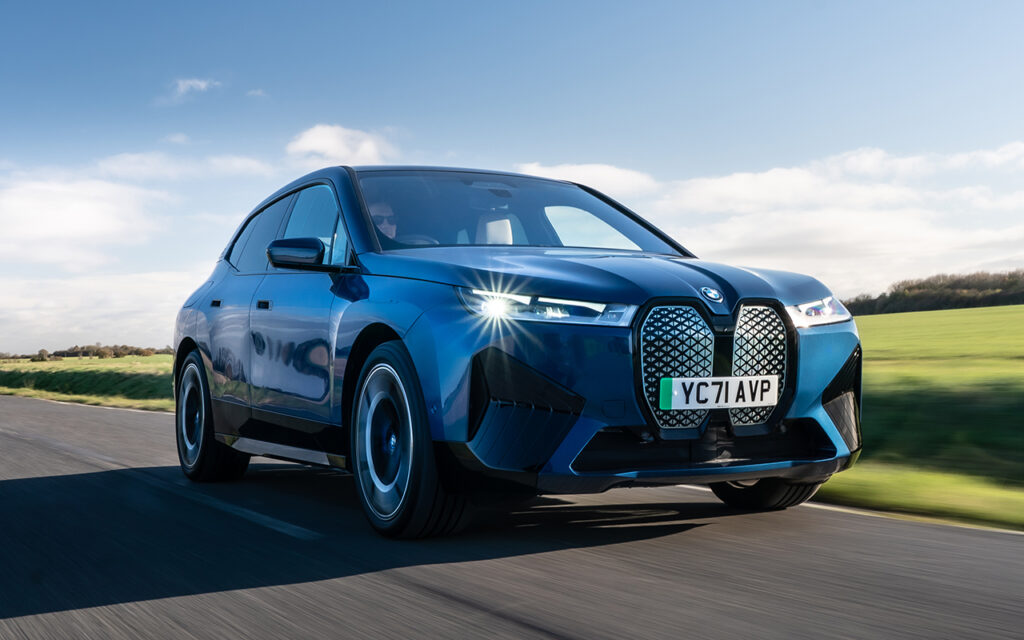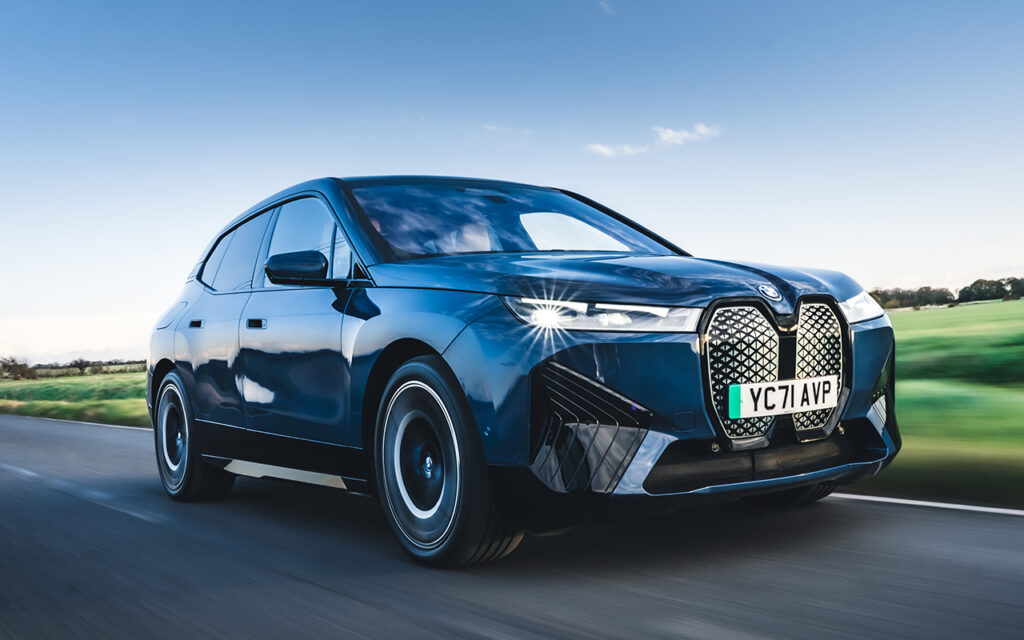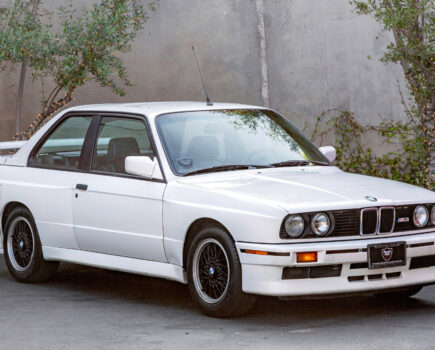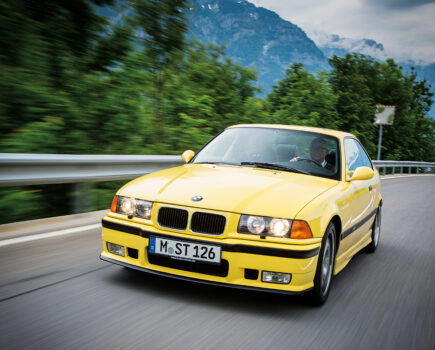BMW has set out to reinvent its cars for the seismic shift towards electric power and autonomous technology: the iX is the line in the sand between the past and the future
Words: Shane O’Donoghue
BMW gave us fair warning. It announced as far back as May 2018 the iNext project that would culminate with an all-new vehicle encompassing a ‘toolkit’ for BMW’s future, a future featuring electric propulsion, automated driving and a high degree of connectivity. It then previewed said vehicle in concept format, called the Vision iNext, in September of that year.
Even so, when the covers came off the new BMW iX at the end of 2020, it was met with electronic gasps from all corners of the social media world. The kindest thing we’ve heard anyone say about the car so far is “it’s growing on me.” To which some cad quickly responded, “what, like a fungus?”
No matter what you think of the BMW iX’s design, there’s no doubt that it has presence. And magnetism for that matter, drawing the attention of all and sundry that pass it by. Sure, the reactions aren’t always favourable, but the iX is certainly a talking point – and perhaps that’s the whole reason for the exercise.
Naturally, most criticism is directed towards the blanked off interpretation of the hallowed kidney grille up front. The upright and narrow shape of this isn’t as controversial as it was before the G22 4 Series hit the market in June 2020, but it still draws condemnation. BMW says it serves a purpose in the iX, as it hides an army of sensors to feed into the driver assistance technology, and it even has an integrated heater to keep it clear in wet or wintry weather. Meanwhile, the polyurethane surface self-heals scratches and stone marks.
The prominence of the grille’s shape is emphasised by the new headlights, an all-LED affair (unless you go for the optional laser items) in the slimmest housing yet used on a production BMW. They butt up against the grille and appear to define the shut line of the bonnet as well. It turns out that the bonnet can’t be opened by mere mortals (only by those in a BMW workshop with the tools and knowledge), though the iX’s owner can top up the washer fluid themselves by pushing the spring-loaded BMW roundel at the front to reveal a filler neck. That’s part of what BMW calls ‘Shy Tech,’ and there are plenty more examples around the car where the technology is hidden away until needed.
The front of the BMW iX isn’t the only aspect of it that has drawn disapproval. The surfacing on the side, with oddly truncated wheelarch sculpting and weirdly styled flush door handles has also been in the firing line, while the large D-pillar is disguised by a detail that visually links the iX with the original BMW i3. Depending on specification, the rear end with its full-width tailgate can look a little bulbous, but the slender new LED lights are attractive – and this time the BMW badge hides the rear-view camera and a cleaning jet for its lens.

Behind that is a boot of disappointing volume, only holding 500-litres of luggage when the rear seats are in their regular position. Sure, the seat backs split and fold down flat to allow for up to 1,750-litres, but by comparison, the BMW X3 holds 550-litres of luggage with the rear seats in use, while most versions of the X5 – with which the iX shares most of its external dimensions – accommodates 650-litres in the boot.
So far, not so good for the BMW iX – its styling is best described as ‘divisive’ and it’s just not as practical as you’d expect a car of this size to be.
But then you pull open a door and the iX’s prospects improve immeasurably. For starters, the glass is frameless, which always adds to the occasion. This is the first time BMW has used frameless door glass on an X model, incidentally. The drama of that detail is quickly usurped by the view within, as the iX’s cabin is simply beautiful. It looks like something you’d expect on a future-gazing concept car and while it’s completely different to anything else in the BMW line-up, there are elements that clearly link it to the firm’s other cars.
The new curved display screen that appears to float above the gorgeously trimmed dashboard is stunning. The graphics are crisp, there’s lots of customisation of the layout available, it’s packed with features and the new generation 8.0 BMW operating system is a joy to use. However you interface with the system – gesture, voice, touch or iDrive rotary controller – its response to input is super-fast and though it does take a while to find your way around the new menu system, it’s quite intuitive. We would have preferred if BMW kept physical buttons for the climate control, but that’s one of our few criticisms.
Between the front seats is a tall centre console, separated from the front fascia by a large gap, which adds to the airy, spacious feeling. Ahead of the armrest is a fresh style of interface for the iDrive controller and more. It’s a solid piece of transparent glass that is remarkably satisfying to use. Our test car featured the optional open-pore walnut control surface underneath, which is wonderfully tactile and also tastefully designed. It’s not just for show, either, as it features shortcuts to various menus in the infotainment. The lettering is backlit and the whole element moves for haptic feedback.
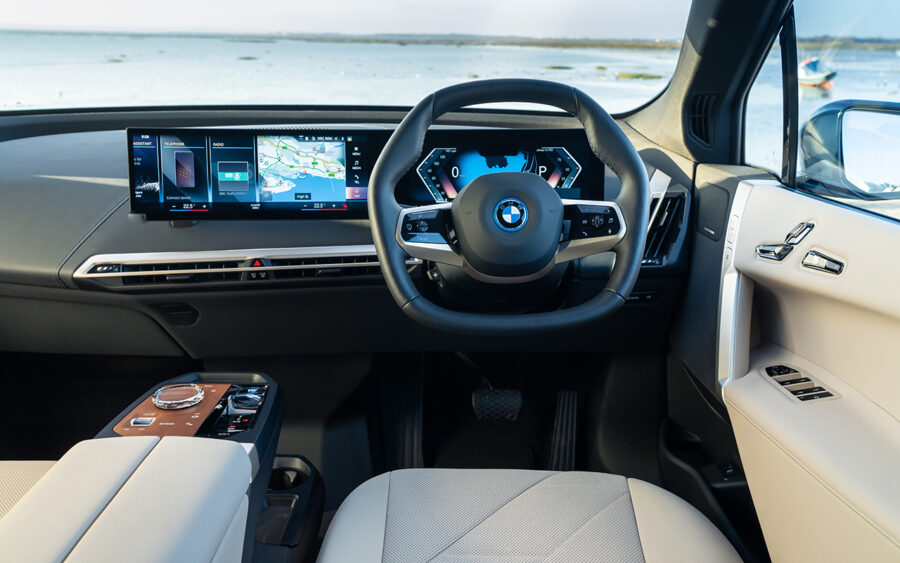
To the left of this is a simple drive select nub and other buttons, for the parking brake for example. At the front of the console is an innocuous-looking slot that has been ingeniously designed to hold a smartphone upright. The cleverness continues underneath in a lower layer. If that phone needs plugging in, this is where the USB ports are, along with two cupholders and a wireless charging pad.
This slick functionality is backed up by wonderfully tactile materials and attention to detail in the design that really stands out. It’s quite daring, as well. Witness the soft gold colour found on the air vents, door handles, electric seat controls and elsewhere. The seats themselves are worth a mention. They’re a new design with the headrests integrated into the backrests and they look particularly striking thanks to asymmetric stitching. There’s a variety of ‘interior worlds’ to choose from, though interestingly, genuine leather is an expensive upgrade, while synthetic leather or microfibre upholstery are the default options.
The rear seats look great, too, and while the boot space is unsatisfactory, there are no such issues with rear-seat accommodation. The seat base is wide, the floor is completely flat all the way across and there’s even a recess at the back of the centre console to allow the middle rear passenger to stretch out their legs. After a long day at the wheel, we found the front seats quite comfortable – and as ever in a BMW, the driving position is massively adjustable. However, there’s no provision for altering the length of the base of the seat, which is disappointing.
A bigger talking point is the new steering wheel. We’ve oft commended BMW for resisting the trend to flatten the bottom of its steering wheels. Other car makers do this in a bid to align their sporty models with motorsport, but we prefer the purity of a circular steering wheel. So the iX’s new hexagonal wheel is a bit of a shock to the system. Obviously, it’s not a sharp-edged hexagon, more a rounded interpretation of the 2d shape with its six ‘sides’ smoothly joined, but it’s still a major change for BMW. Nonetheless, its rim feels good to hold, and the large ‘diameter’ means it’s really easy to see the digital instruments behind.
Somewhat surprisingly, it soon feels second nature when you’re driving, whether that’s on the motorway or manoeuvring in town or tackling an interesting road. And the iX manages to excel in all of these conditions. With a wide track, long wheelbase and ultra-low centre of gravity – due to the battery pack’s location in the floor – the BMW iX feels nothing like the company’s other SUVs on the road. It’s much smoother, more refined and more car-like than any of them.
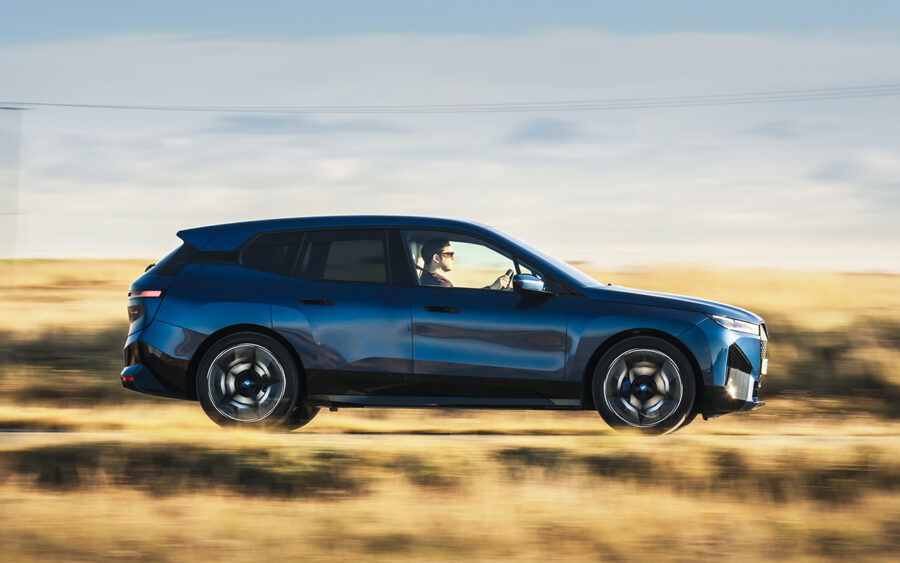
The iX is, however, a very heavy vehicle – getting on for 2,500kg in most guises. Nonetheless, the chassis design and tuning do a respectable job of hiding that from the driver. Our test car featured air suspension, adaptive damping, variable ratio steering and even Integral Active Steering, so it had a good start in life. On the derestricted Autobahn in Germany, it accelerated fiercely to its limited top speed of 124mph and it was quite happy to cruise along at that pace, too, feeling stable, secure and even quiet other than the wind being buffeted out of the way.
On twisty country roads, it’s equally impressive, soaking up bumps effortlessly while still being surprisingly fun to drive. The steering is particularly well-judged, and the iX is keen to enter a tight curve. It corners flat, feels perfectly balanced mid-bend and, if you push the accelerator a little early on the exit there’s even a vague sense that it’s rear drive as it slingshots out onto the straight.
Not that it’s ever untidy. Traction is strong and it generally goes where it’s steered, though with more driver interaction than might be expected from a big electric SUV. The only time you really feel the iX’s weight is when heavily braking into a sharp s-bend, but even then, it manages to keep things under control. Driven normally, the overriding impression is one of quietness. It feels like a luxury car, in essence.
The BMW iX will get all-wheel drive as standard thanks to an electric motor on each axle, but we don’t expect many to take it off-road. The entry-level version, called the xDrive40, produces up to 326hp and 464lb ft of torque, which means it’s no slouch, despite its considerable weight. It comes with a 71kWh usable battery pack and an official maximum range of up to 257-miles.
Tested here is the iX xDrive50, which, thanks to a more powerful rear motor, can produce up to 523hp and an incredible 564lb ft of torque.
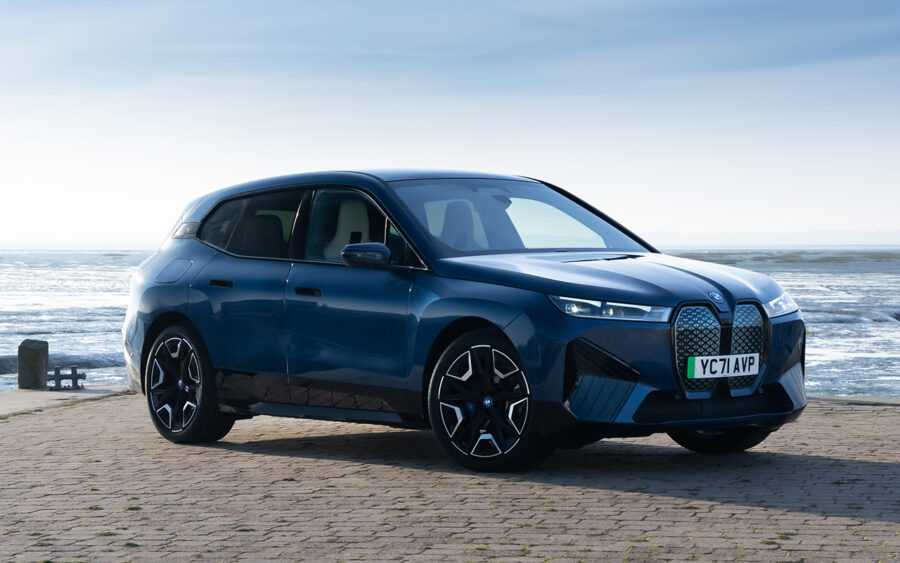
That means 0-62mph in a faintly absurd 4.6- seconds. BMW has calibrated the system to be smooth rather than scary fast, however, so it’s easy to drive it and never feel such shocking performance, though it is notably more responsive in the Sport driving mode. If that’s still not enough performance for you, there’s an iX M60 in the pipeline with 600hp.
The xDrive50 comes with a battery pack of 105.2kWh usable energy capacity. Depending on specification, that translates into a maximum range between charges of up to 380-miles. In our day with the car, where speeds were undoubtedly higher than would be achieved in the UK, the average consumption figure of 23kWh/100km we achieved would still result in a range of well over 300-miles. And this iX can avail of rapid chargers up to a rate of 195kW, so it’s suitable for lots of motorway driving.
No, it’s not as practical as an X5, but not all X5 buyers need the space or seating capacity available. Against a starting price of £69,905 for the iX xDrive40 Sport – or £91,905 for the xDrive50 Sport – the entry-level X5 xDrive30d xLine is still fair value at £60,735, though it’s much slower and comes with higher running costs.
The plug-in hybrid X5, the xDrive45e at £66,415, is a closer comparison, especially as it can’t be had with seven seats and its boot only holds 500-litres. That’s still a very impressive car by any measure, but the iX immediately dates it. That’s how big a step forward BMW has taken with the launch of this car. It’ll undoubtedly go down in the annals as a milestone moment for the brand.
